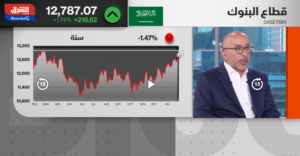Once upon a time, in the fictional kingdom of assets, the prevailing doctrine was that the acquisition of financial and real estate assets were a form of savings – the ability to get higher “coupon clippings” for taking a higher amount of risk. And that over time, these “coupons” would overpower the dark forces of inflation such that net wealth would rise over time.
This was a fairly stable relationship that held from the end of the Second World War to the early 1980s. Around that time, as interest rates started to fall, the income distribution changed dramatically, as capital gains started to dominate wealth creation.
-ADVERTISEMENT-
Ads by
Today, as traditional asset prices in country after country start to exhibit declines, the question arises: Do we go back to the old way of thinking? And what happened in the interim that changed the fundamentals of the game?
Twin dynamics
We can safely say that the period of exceptionalism in real estate assets was a combination of liquidity driven factors as well as more fundamental forces of urbanization that lead to the asset price appreciation. The price pattern can be broadly broken down into two areas: 1) “flat land” where prices rise and fall as per the cost of construction as land is in abundance and 2) “zoned” areas, where land is limited as per government regulations, where prices rise at a rate that is greater than GDP growth.
Flat land areas then become a vehicle for affordable housing, as populations move towards areas where rents and prices do not exhibit runaway growth. Zoned areas, exhibit greater price volatility, as they are subject to the vagaries of speculation and are more prone to exaggerated price patterns.
Liquidity tantrums
Lurking in the background, however, is the critical variable of liquidity. Since the 1980s, liquidity has been growing at a rate greater than the rate of consumer price inflation. And the reason has been that this variable has been channeled towards acquisition and manufacturing of assets that itself spurs growth.
When liquidity stalls, asset prices stall, and the challenge becomes one where liquidity needs to be pumped in for economic growth to continue (a strategy followed by the US since 2008 via the quantitative easing programme). Liquidity (or lack thereof) exaggerates price patterns.
But it remains an invaluable ingredient – far more than the non-existent spectre of “oversupply”, which has taken care of itself through reduced launches – to smooth out the exaggerated price volatility that spills over into economic growth.
Taking price declines in stride
In the UAE, asset price declines have led to increased transactional volumes (even correcting for the errors of private sector data providers), suggesting that the lure of future capital gains remains intact. However, even as oversupply concerns dominate the zeitgeist, the data suggests that occupancy levels remain high.
It’s just that there is more choice for the end user/investor. When prices fall at a rate that is greater than rental values, yields start to rise, thereby incentivizing future purchases. However, this can be coaxed by government regulation to a) increase investments in infrastructure and b) bringing in valuators into the regulatory net so as to allow for greater lending.
The first step is already being undertaken and the second is something that is inevitable, especially given the same momentum that is being undertaken at the international stage. What is apparent is that austerity programmes do not work.
Affordability play
The challenge remains to grow economies at a rate that is greater than borrowing rates, such that aggregate debt levels “melt away” over time as asset price growth levels assert themselves into economic statistics. And all the while allowing for the affordable housing market to grow in volume. This is crucial, because the UAE remains, definingly, an immigrant society, vast and formless, where everyone subliminally understands that affordability will be a key driver in its continued growth over time. Government measures to relax immigration rules, as well as reduce other fees itself act as stimulus for further investment.
Inherent in these measures is the recognition of the protean immensity of immigrants. The role of analysts remains clear enough in theory, albeit harder to implement on the ground.
They have to take the temperature of the market on a periodic basis, tenderly checking its pulse using a wide and sophisticated array of filters and instruments, as the new world co-exists with the old paradigm now in decline.
– Sameer Lakhani is Managing Director of Global Capital Partners.





